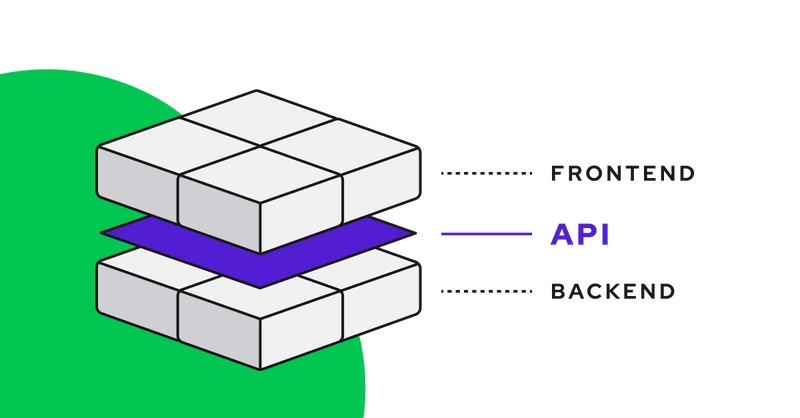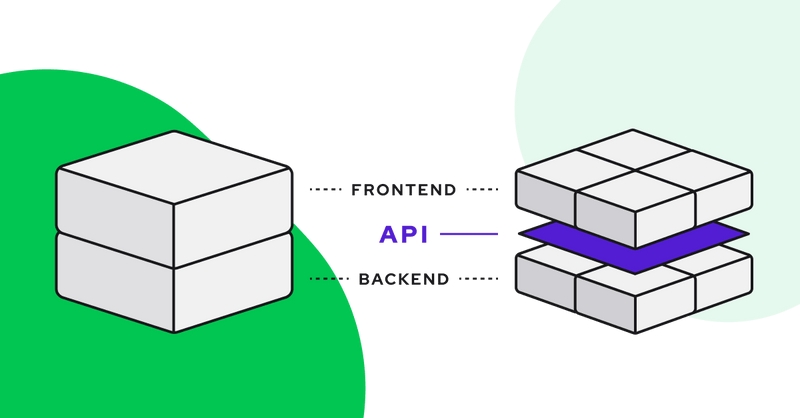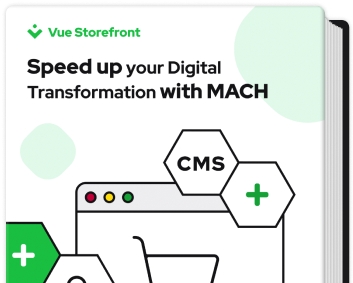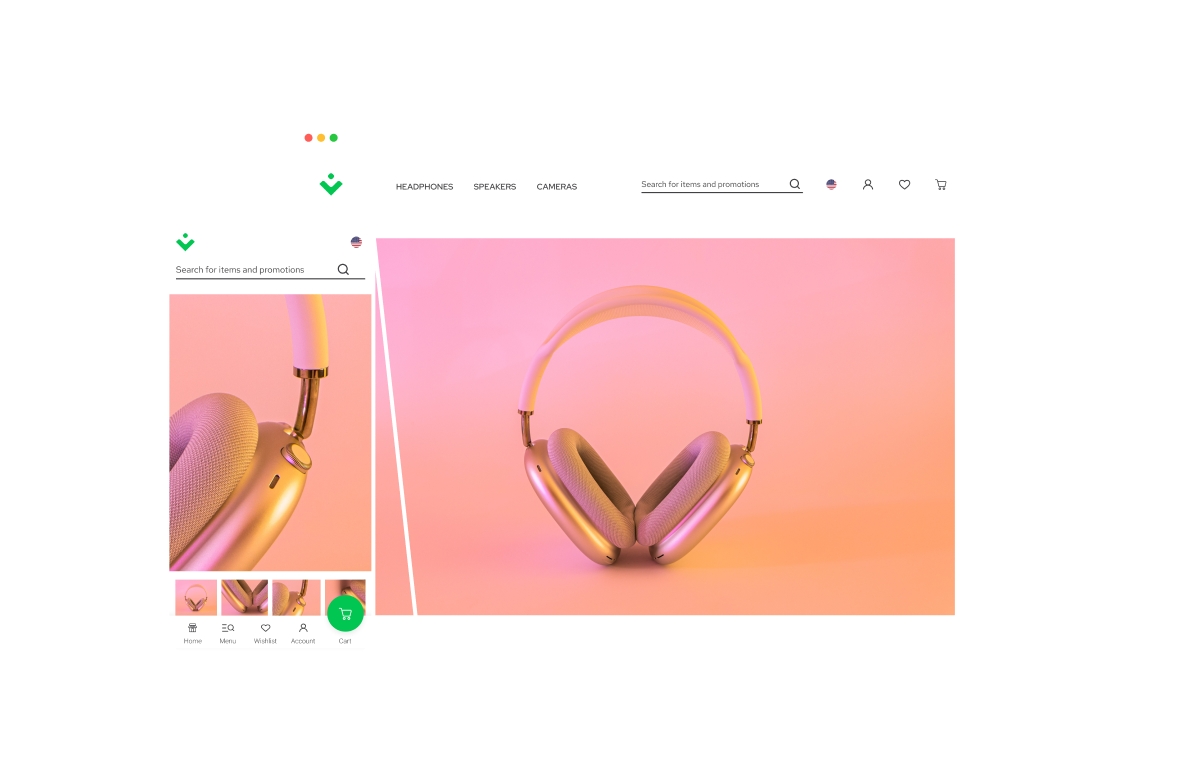Explore by Category:
Headless Commerce
What is Composable Commerce?
Composable commerce is definitely a hot topic these days. Without a doubt, this phenomenon will be the future of eCommerce, and it will probably change the way we create commerce systems forever.
There are terms in the digital commerce world that have their moment. However, many of them disappear after a while, and no one really remembers what they were about.
Yet, that is not the case of composable commerce. Its service-oriented approach has been known for a while, but it is definitely on another level in combination with the essence of MACH architecture .
Let's start with a composable commerce definition
Composable commerce is a common term for software architecture, which separates the UI (frontend) from the business logic (backend), and provides the possibility to choose the best-of-breed technologies to build a flexible eCommerce stack. The software communicates via API, and the particular solutions can be replaced without impacting other parts of the system.

Now let's get to the nitty-gritty of composable commerce
The online commerce market is vast, and as a result, customer buying behavior varies widely. This means we cannot assume that one solution covers all needs and one sales channel is suitable for every recipient.
Composable commerce is a response to the urgent need for customization and individualization. Commerce platform must be ready to handle myriad touchpoints and reach customers where they are, based on data, not waiting for them to come to the brand.
One desktop version of a store is not enough. Customers use different devices and different digital channels to make their purchases. It is up to the brand to provide them with the same commerce experiences everywhere.
The omnichannel approach is a must for eCommerce brands nowadays. In order to be able to serve the customer in various channels as quickly as possible, there is a need for new technologies and solutions to be flexible and independent. One of the greatest examples of it is the MACH approach, which is an introduction to the development of composable commerce.
MACH architecture is all about microservices , API-first, cloud-native, and headless technology .
Composable commerce takes it to the next level. It aims to focus on solving specific business needs while making them easy to consume, integrate and use. This approach reduces complexity and rigidity compared to the extremes of a purely rigid monolith or a complex microservice architecture.
You have certainly encountered such solutions, perhaps without even realizing that they are elements of the modular commerce approach. These include as Frontend as a Service (FEaaS), Content Management System (CMS), Payment, Reviews or Search solutions as standalone products.
What are the differences between composable commerce and traditional commerce?
With composable architecture , companies are no longer tied to monolithic application suites. They can try the best of new modular technology without licensing restrictions from a single provider. The structure of this bold fresh approach is called "Packaged Business Capability".
Gartner defines Packaged Business Capabilities as "software components that represent a well-defined business capability." The term is a bit long-winded, but it refers to a business service that can stand on its own and be consumed by the end-user as a whole.

It must be autonomous - not dependent on external data or services - to accomplish a task. These bundled business functions serve as building blocks of larger app suites, all connected by an API. Each bundled business function is a feature or capability of the app and is typically a third-party software component.
The monolithic app is a single-tier software application where different components are combined into a single program from a single platform. An example of this could be an eCommerce SaaS application. It could include a web server, a load balancer, a catalog service that provides product images, an ordering system, a payment function, and a shipping component, etc.
At first glance, this can be very convenient because you have everything in one place and in one application. However, the large monolithic code base presents immense cognitive complexity for the developer. As a result, the development speed is slow. Granular scaling (i.e., scaling a portion of the application) is not possible. If you want to make a change to the product review module, you need to update the entire system, not just that one part.
Even if the monolithic software has many functionalities, they are often not all highly developed and improved, e.g. the built-in checkout may not support the payment options we want.
Composable commerce vs headless commerce
Composable commerce and headless commerce are often used interchangeably, although the comparison of composable commerce vs. headless commerce presents at least one main difference.
Composable commerce goes beyond headless commerce , separating the frontend stack from the backend and selecting the best technologies to build your commerce stack.
Composable commerce vs headless commerce – which of them leads the way?
For many eCommerce applications, using headless commerce is the first small step towards a flexible architecture. Decoupling the frontend from the backend frees an enterprise from the constraints of an eCommerce platform's limited frontend capabilities. It also ensures that frontend developers can work independently of backend teams, with no cross-functional coordination and compromising an already fragile and enlarged monolith.
Composable commerce takes the flexibility offered by headless solutions to the next level. Within headless architecture , functionalities can be limited by business logic trapped in the monolith if the main platform is still a full-stack engine.
Composable commerce architecture is API-first, as the software communicates through APIs to create complex business solutions.
However, these pieces can also work independently - meaning that one piece of the puzzle can be replaced without impacting other parts of the system.
What are Package Business Capabilities and how they differ from microservices?
When you see the above description of composable commerce, it may sound just like microservices' description. True, both are similar but stress different aspects.
In fact, Package Business Capabilities shares many characteristics with microservices, but does not have an explicit size, but varies in size from micro to macro capabilities. The goal of a PBC is to focus on solving specific business problems while being easy to consume, integrate, and use.
In short, microservices are a way in which an application is broken down into small functions or features. Packaged Business Capabilities are intentionally grouped, aggregated sets of microservices.
PBCs can also be combined and integrated into modern technology stacks to solve larger business requirements and strategies and assure high-level commerce experiences.
By Gartner's definition, a PBC comprises a grouping of APIs (a limited collection) that serve a specific business function, as opposed to microservices, which have a narrower scope and are more granular. In easier ways, we can say that PBC is an application or service built around a specific business function.
In a sense, MACH architecture and its components are precursors to PBCs. It focuses on many modular best-of-breed applications, from different vendors, instead of putting one giant provider in the center.
What are the benefits of composable commerce?
Happy development teams
Building eCommerce stores using the composable approach is a tremendous relief for development teams. They no longer have to worry that a change in one area of a particular functionality will affect the entire system. Full-stack upgrades are never a nightmare for them again. Programming processes run much faster and without the risk of a change crashing the entire application.
Reduced operational costs
It can also be profitable in a monetary sense - merchants reduce operational costs by choosing only the features and vendors they actually need.
Composable Commerce is flexible when it comes to building applications, but also in business and strategic terms. This allows for quick decision-making by selecting appropriate providers depending on the market, based on the analysis of competition or financial situation.
Many of the software developed according to Composable Commerce takes some or even all of the responsibility from developers. They are built with the use of low or no-code and their operation does not require specialized skills. This situation leads to savings because a large part of the tasks can be performed by non-technical employees. For example, marketers can update their website content themselves, in real-time, without the need for developers to do updates.
Flexibility and agility
Selling today must be done across multiple channels, and businesses that sell across channels like web, mobile, and social need an extensible and flexible commerce platform.
With the ability to implement their own digital commerce technology stack, retailers and brands have the freedom to define exactly what their frontend experiences look like and how their business works on the backend.
The modular approach offers businesses the agility they need to deliver innovative experiences at speed and scale and differentiate themselves from a growing number of competitors.
Future-proof approach
Using Composable Commerce enables businesses to be always adopted for the future.
Migrating to composable commerce can be done all at once, but it is advisable rather create a roadmap and proceed step-by-step with implementing individual functionalities.
This approach allows merchants to migrate high-priority features first and to decompose the monoliths slowly. It is a far safer approach, minimizing the risk of potential failures. Moreover, it allows the businesses to thoroughly review their goals and set a reasonable - in terms of cost and time - schedule for achieving them.
Summary
- Composable Commerce is about giving brands and retailers the flexibility and tools to rapidly changing their technology stack, operations, and growth based on their business requirements and strategy.
- In this modern approach, digital commerce teams can select and assemble different "best-of-breed" commerce solutions that fit their exact needs.
- Each Packaged Business Capabilities (PBCs) is a function or capability of the application and is typically a third-party software component. The right granularity of each PBC should be determined by business need, and balanced with cost, complexity and time-to-market.
- Organizations that have adopted a composable commerce leave the competition behind, mainly because of the speed of new feature implementation and changing the existing ones.
How to get started with composable commerce?
To migrate from your monolith stack to composable commerce, you can apply a cost- and time-effective approach. Instead of full-blown re-platforming, you can start with replacing just a frontend.
"Headless" storefront is a frontend presentation layer that supervises and orchestrates the user-side of eCommerce.
There are multiple reasons to start a composable commerce journey with the presentation layer:
Frontend drives customer experience. Digital customer journey happens on the frontend. By choosing frontend as the first step towards a composable approach, you start with your customer needs.
Frontend drives performance. The monolithic legacy solution is crippling your page speed, conversion rates and revenue. Instead of costly point solutions, implement a frontend technology optimized for speed out-of-the-box.
Alokai allows easy and smooth migration for quick ROI. With Alokai as your frontend platform you can easily take the first step towards a modern composable commerce architecture. Instead of building it from scratch, with Alokai you will assemble your presentation layer with pre-built blocks optimized for performance.
Start with your storefront!
Share:
Share:
Ready to dive in? Schedule a demo
Get a live, personalised demo with one of our awesome product specialists.





















